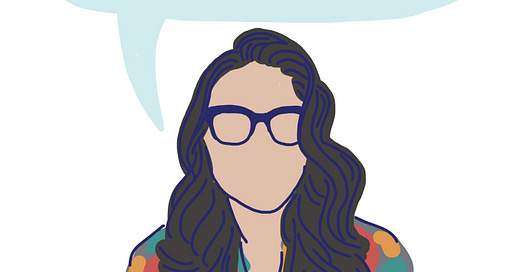I have been thinking about writing about money for months. My lens is not that of a financial expert. Instead, I am an everyday person and independent businesswoman with deep historical financial baggage. Over nearly two decades as an entrepreneur I have learned a lot and implemented concrete tactics to face my financial fears and find emotional relief.
And then the universe sent me a sign to get off my ass and just do it.
A few weeks ago I spoke on a panel about balancing motherhood with creativity. We got real about how challenging it can be to make money as a creative. I commented that women aren’t “supposed” to say this sort of thing, but I like making money—actually, I love making money and there is nothing wrong with that! (For me it is about security, not luxury or striving; for example, we are privileged in owning two vehicles, but they are 10 and 16 years old.) I followed to share that—based on my experience as an author and someone who has written many articles for The Washington Post, CNN, and Boston Globe Magazine, and as someone who lives in an expensive hub and is paying for college right now—I know I can’t earn a living solely as a writer. So, to maintain my joy and sense of purpose as a writer, I leverage my creative skills to make money elsewhere.
A couple of days after the summit, one of my fellow speakers—the incredible artist
—shared a recap of the event, including an illustration based on my comment about money.OMG MIC DROP because what is this illustrative wizardry?! It looks just like me even though I have no facial features! Thank you for this gift, Mary Catherine.
Mary Catherine generously said I could share the illustration however I like, and I figured it was a sign from the universe that it was time to kick off my editorial series about money. My plan is to share about how to earn money, manage panic about it, wrestle with scarcity fear, etc., and in my typical fashion, I will give you nitty gritty details and tactics, not just vague aspirational directives.
And it worked out that the tactic I wanted to start with is the perfect practice to kick off after you get through US Tax Day, a day often laced with fear and panic and shame.
But first, to set the stage, we need to start with some backstory about money, which is related to fear and panic and shame.
I have been an independent businessperson since August 2006—nearly 19 years—when I left my career as a music and brain scientist in a state of extreme duress and dissatisfaction. I created a successful, multidimensional career out of nothing, but I spent the first decade in a state of avoidance and panic over the mere prospect of looking at my numbers.
My problem was that I grew up in scarcity, which meant that any financial news was bad news (for example, “If you want to go to college, you need to pay for it yourself”). Any financial analysis—for example, balancing my checkbook or calculating how much I needed to earn to pay for another semester of college—was wracked with stress and panic because the answer was always, “You don’t have enough. You may not make it. You need to do more, or you are screwed.” Sometimes there were also humiliating answers such as, “It is time to beg and cry.”
I liken the impact of this continual negative feedback loop to what it would be like to be a small antelope in an open field, circled by cheetahs for about 30 years straight.
One might think it would be scary to jump academic ship without a plan or job prospects, but my salary as a postdoctoral fellow was paltry. The starting salary in 2003 for my NIH-funded, triple appointment postdoctoral fellowship at Massachusetts General Hospital, MIT, and Harvard Medical School was about $31,000. By the time I left in 2006 it was around $40,000. Plus, I was paying for daycare, which is exorbitant in the Boston area. This meant that the bar wasn’t tremendously high. Indeed, once I decided to leave academia and strike out on my own, it didn’t take me long to pick up enough freelance contracts to make up that salary.
As I began to monetize elements of Boston Mamas and engage in consulting with small businesses looking to grow, it became clear that I had natural instincts as a consultant. I was great at coming up with creative ideas and ways to tell one’s story. I was killer at execution. And I also brought humanity to the effort.
In 2011, a series of realizations (I will share these later on in the financial series) led me to work with Morra Aarons-Mele, and that is when things started to break open financially for me. Morra is a rare combination of strategic communications genius and business development unicorn so not only did I hit the ground running working on amazing, mission-driven projects—the first client project she brought me into was the freaking American Cancer Society—but we had a fantastic time doing it. Between my work with Morra and other elements in my revenue breadbasket (again, another forthcoming topic), my yearly revenue quickly surged to six figures for the first time ever.
I was, without question, experiencing abundance for the first time in my life, but I completely shut down when it came to looking at numbers. I was gripped by the fear that the numbers might not look good, or the numbers would suggest I was not doing enough, or that I was just one day away from being homeless. I know this doesn’t make sense. All I can venture to guess is that after three decades of financial scarcity panic, I short circuited.
And then everything changed.





